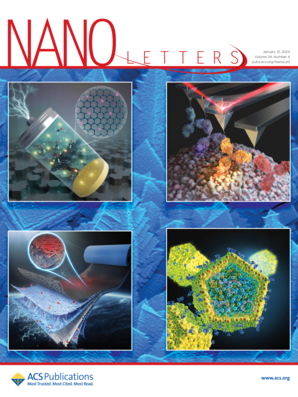Cocooning Wound for Healing
IF 9.6
1区 材料科学
Q1 CHEMISTRY, MULTIDISCIPLINARY
引用次数: 0
Abstract
Wound healing is highly sensitive to environmental conditions. Under solar radiation, elevated wound temperatures and UV-rays can induce oxidative stress, disrupt the wound environment, provoke inflammation, and even cause thermal injury. Lower wound temperatures may hinder angiogenesis and immune function, thus delaying recovery. Inspired by silkworm cocooning for thermal comfort during metamorphosis, we developed the wound cocoon (W-cocoon) using a portable high-speed electro-blow spinning (EBS) device. The W-cocoon integrates radiative cooling and thermal insulation properties, providing both cooling (3.9 °C) under sunlight and warming (1.9 °C) indoors. Based on animal studies, the W-cocoon promotes wound recovery in indoor scenarios, while under solar radiation, its high reflectivity and UV-blocking ratio mitigate the negative effects of radiation, thus optimizing wound healing. Additionally, the W-cocoon exhibits superhydrophobic and hemophobic properties, which endow the dressing with antifouling capabilities and reduce pain during dressing changes.

求助全文
约1分钟内获得全文
求助全文
来源期刊

Nano Letters
工程技术-材料科学:综合
CiteScore
16.80
自引率
2.80%
发文量
1182
审稿时长
1.4 months
期刊介绍:
Nano Letters serves as a dynamic platform for promptly disseminating original results in fundamental, applied, and emerging research across all facets of nanoscience and nanotechnology. A pivotal criterion for inclusion within Nano Letters is the convergence of at least two different areas or disciplines, ensuring a rich interdisciplinary scope. The journal is dedicated to fostering exploration in diverse areas, including:
- Experimental and theoretical findings on physical, chemical, and biological phenomena at the nanoscale
- Synthesis, characterization, and processing of organic, inorganic, polymer, and hybrid nanomaterials through physical, chemical, and biological methodologies
- Modeling and simulation of synthetic, assembly, and interaction processes
- Realization of integrated nanostructures and nano-engineered devices exhibiting advanced performance
- Applications of nanoscale materials in living and environmental systems
Nano Letters is committed to advancing and showcasing groundbreaking research that intersects various domains, fostering innovation and collaboration in the ever-evolving field of nanoscience and nanotechnology.
 求助内容:
求助内容: 应助结果提醒方式:
应助结果提醒方式:


